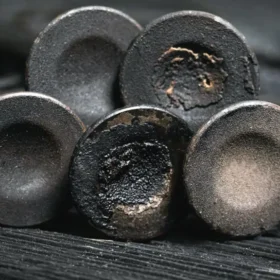VP shunt procedures can be a stressful process. It is a surgical procedure used to treat hydrocephalus, a condition in which cerebrospinal fluid builds up in the brain, leading to symptoms such as headaches, nausea, and balance problems. Recovery from a VP shunt procedure can be difficult, and it’s important to understand what to expect and how to best support your own recovery. In this blog post, we’ll go over some tips and advice on how to recover from a VP shunt procedure.
Follow your surgeon’s instructions
Recovering from a VP shunt procedure can be a difficult process, but following your surgeon’s instructions is key to ensuring a successful recovery. Your surgeon will give you specific instructions on how to care for yourself after the procedure, and it’s important that you follow them closely.
In the first few days following the procedure, it’s important to get plenty of rest and drink plenty of fluids. You should also avoid strenuous activity and heavy lifting, as this can increase pressure on your incision site and disrupt your recovery. Make sure to check in with your doctor if you experience any pain or discomfort in the days following the surgery.
You may need to take antibiotics or anti-inflammatory medications for several weeks or months after the procedure to reduce the risk of infection. Be sure to take all medication as prescribed by your surgeon and to finish the entire course of medication, even if you start to feel better.
By following your surgeon’s instructions closely and monitoring for any signs of complications, you can ensure a successful recovery from a VP shunt procedure.
Drink plenty of fluids
Drinking plenty of fluids is essential for a successful recovery from a VP Shunt procedure. Staying well-hydrated helps your body cope with the procedure, and can help reduce any potential side effects or complications.
It is important to drink plenty of clear fluids such as water, sports drinks, and other non-caffeinated beverages. Avoid drinking caffeinated drinks, as they can cause dehydration and make recovery more difficult. You should also limit your consumption of alcoholic beverages during this time.
If you are having difficulty drinking enough fluids, try adding electrolyte powders to your water or trying different types of fluids to make them more appealing. Additionally, talk to your doctor about any medications you are taking that may cause dehydration.
Finally, keep track of your fluid intake by measuring how much you drink each day and tracking your progress. By drinking plenty of fluids, you will be helping to ensure a successful recovery from your VP Shunt procedure.
Avoid strenuous activity
One of the most important steps in recovery is avoiding strenuous activity.
Strenuous activity is any activity that puts a lot of stress on your body, such as running, jumping, or heavy lifting. This type of activity can cause increased pressure on the shunt, which can lead to complications and potentially even failure of the shunt. For this reason, it is important to avoid strenuous activity for at least 6 weeks after your surgery.
To make sure you are taking the proper precautions during your recovery, discuss any activities you plan to do with your doctor. Depending on the severity of your condition, your doctor may recommend taking it easy for up to 12 weeks after surgery. You should also pay attention to how your body feels during activities and listen to your body if it is telling you to rest
Keep the incision site clean and dry
Recovering from a VP shunt procedure is an important part of your recovery process. It is important to follow your doctor’s instructions and take good care of yourself during the recovery period. One of the main things you can do to ensure a successful recovery is to keep the incision site clean and dry
Keeping the incision site clean will help to prevent infection and ensure that the wound heals properly. After your surgery, your doctor will likely give you a special dressing or bandage to cover the incision site. Make sure to change it regularly and as directed by your doctor.
You should also make sure to keep the incision site dry. Avoid activities that may involve water such as swimming or bathing. If you need to take a shower, cover the incision site with a waterproof bandage. When drying the incision site, pat it gently with a soft towel and be careful not to rub the area.
By following these simple steps, you can help ensure a successful recovery from your VP shunt procedure. If you have any questions or concerns, contact your doctor right away.
Check for signs of infection
The VP shunts Procedure in Coimbatore is a necessary and life-saving treatment for hydrocephalus, but it also involves some risks. One of the biggest risks associated with the procedure is infection. Infections can occur at the insertion site or along the course of the shunt. It is important to be aware of the signs of infection after the procedure and to seek medical attention immediately if you experience any of them.
Common signs of infection may include:
- An insertion site that is swollen, painful, or red.
- Chills or a fever
- Discharge from the insertion site, along with discomfort, nausea, vomiting, or diarrhoea
Make an immediate appointment with your healthcare professional if you experience any of these signs. Additionally, it’s critical to adhere to your doctor’s recommendations for shunt insertion site cleanliness and maintenance. The key to preventing illness is good cleanliness.
Call your doctor if you have any concerns
If you or someone you care for has recently undergone a VP shunt procedure, it is important to understand the potential risks and how to properly recover from the procedure. After surgery, it is normal to experience some discomfort and even pain in the area around the incision. While this can often be managed with over-the-counter pain relievers, if your pain persists or worsens, contact your doctor immediately.







